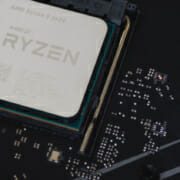Build An MVP: 8 Mistakes To Avoid For Success
If you’re about to build an MVP, then you’re going to face several challenges. You’ll want to implement a ton of cool ideas, but you’ll probably pare these down for project feasibility. Then, you’ll have to consider Waterfall methodology vs Agile and choose the right model. And, budgetary concerns may make you spend too much or too little on your upcoming project. The wrong decisions could potentially derail the success of your MVP. Therefore, we’ve compiled this handy list of 8 mistakes to avoid to keep your project on track.
1. Build An MVP Too Complete Or Slimmed Down
Everything in life is about balance, and the same applies to building an MVP. Quite often, developers get excited about making a mind-blowing MVP and go overboard by adding unnecessary features. They waste company resources by spending time on these extra bells and whistles, hoping that they’ll wow clients. But the result is an unfocused product that confuses clients or doesn’t deliver basic functionality as it should. Small or inexperienced teams usually have trouble implementing complex systems with robust functionality.
However, it’s not a good idea to build an MVP that’s too slimmed down either. While it makes sense to keep things simple, this doesn’t mean that it should be too basic unless that’s what’s specified by the client. Ideally, you want to create an MVP that delivers all core functionality in a near-flawless manner. But you also want to implement the user interface (UI) & user experience (UX) to make your MVP feel complete. Ultimately, you want the MVP to give the client a clear picture of how the final product will look.
2. Choosing The Wrong Methodology
Developers are a passionate lot, especially when it comes to their favorite programming languages, tools, and methodologies. You’ll catch them feverishly debating the Waterfall methodology vs Agile on Stack Overflow, Quora, or around the water cooler. You may even have a hotshot developer on the team that’s eager to dive into an MVP agile project. Thus, it’s easy to be swayed by popular opinion of which methodology to adopt in your upcoming MVP.
The best course of action here is to consider all benefits of the Waterfall methodology vs Agile. Moreover, you’ll have to decide on which model suits your MVP the most. If you need to get deliverables out to clients quickly, then we recommend the MVP agile approach. But if you’re working on a larger or very defined project, then it’s better to apply the Waterfall methodology. Keep in mind that it’s difficult going back and making changes after commencing or testing a project with Waterfall.
3. Build An MVP That Costs Too Much
We don’t recommend that you skimp on costs to build your MVP. After all, you want an MVP that’s of reasonably good quality. But don’t burn through your entire budget, as your project may prove unfeasible in the long run. By working with an experienced developer, such as NS804, it’s possible to determine costs beforehand and avoid nasty surprises along the way. Moreover, a competent developer will deliver the MVP on time, implement best practices, and meet expectations.
4. Spending Too Much Time On Research
It makes sense to do your homework before building your MVP, but don’t overdo it. One of the reasons you’re making an MVP is to determine its validity in the marketplace. Ultimately, it’s your target audience that will decide if your project is worth scaling into a full-fledged product. Researching too much will also give you plenty of ideas, which may tempt you to apply all these in your MVP. Overloading your app with too many features will make it harder to develop, maintain, and scale.
5. Building An MVP Without Understanding Your Audience
One of the biggest mistakes you could make is building an MVP without understanding your audience. If you’ve never released an app before, you may think that all users will find your MVP appealing. But when you eventually launch it, you’ll come to the harsh realization that few users bother to download it.
Now, why does this happen to so many developers?
In most cases, they’ve failed to do market research to understand who their audience is and what they want. They’ve cast their net wide, hoping that they’ll attract a large mainstream audience. But that’s now how the app marketplace works! Users invest their time in highly-popular apps such as Evernote, Facebook Messenger, and Signal since these provide the features and functionality that people find valuable. Thus, only incredibly talented development teams with massive marketing budgets can compete with the above offerings.
Before embarking on MVP development, it’s critical to think about target market segmentation. Moreover, it’s necessary to ask several questions such as: Where does your user live? What’s their demographic group? What’s their general attitude or outlook on life? What hobbies and interests do they spend their money and time on? And what life stage are they currently in?
Also, it’s vital to understand the differences between a target market and a target audience. It’s’ easy to confuse the two terms since they often have overlapping meanings. Succinctly, a target market affects every aspect of an enterprise’s decisions relating to its product, pricing, and sales processes. But the target audience will only influence the enterprise’s marketing and messaging endeavors.
6. Using The Cheapest Option Possible
You’ve decided to forge ahead with your MVP agile project but noticed that your input costs are mounting. With months still to go before your MVP is out the door, you decide to cut costs. You let go of several key developers in your team and hire cheaper contractors from abroad. Furthermore, you forego unit testing in the hopes of reducing your time to market (TTM) and overall costs. And, when you finally release your MVP, you discover that it’s a buggy mess plagued with problems.
Choosing the cheapest option almost always leads to unsatisfactory results. That’s why we can’t stress enough how important it’s to work with an experienced developer when building an MVP. Not only will a team of professionals help you craft a professional MVP, but they’ll also ensure that it’s budget-friendly.
7. Striving For Perfection
You should complete your MVP within a reasonable amount of time. But don’t rush it out the door, as its quality will likely suffer. Instead, focus on building an MVP that showcases its core functionality and avoid adding any unnecessary features. And don’t waste resources on too much spit and polish, which is better suited for your final product. You’ll meet your deadlines and goals if you keep your app as simple as possible and not try to make it perfect.
8. Promising Something Impossible To Deliver
You may be working with a phenomenal marketing team that’s ready to set all your social media channels on fire. You’ve handed over marketing materials and screenshots of your MVP, hoping the marketing team to build an enormous amount of hype. But have you thought things through about how you’ll be conveying your message to your target audience? Are you sure that your MVP will meet expectations, or are you overpromising? If your app doesn’t live up to the hype, then you risk damaging your reputation.
In Conclusion
Building an MVP is a rewarding but often challenging process. However, it’s possible to make the process a lot easier by avoiding the 8 mistakes we’ve covered above. Contact us today to learn how NS804 can make your next MVP a roaring success!













Leave a Reply
Want to join the discussion?Feel free to contribute!